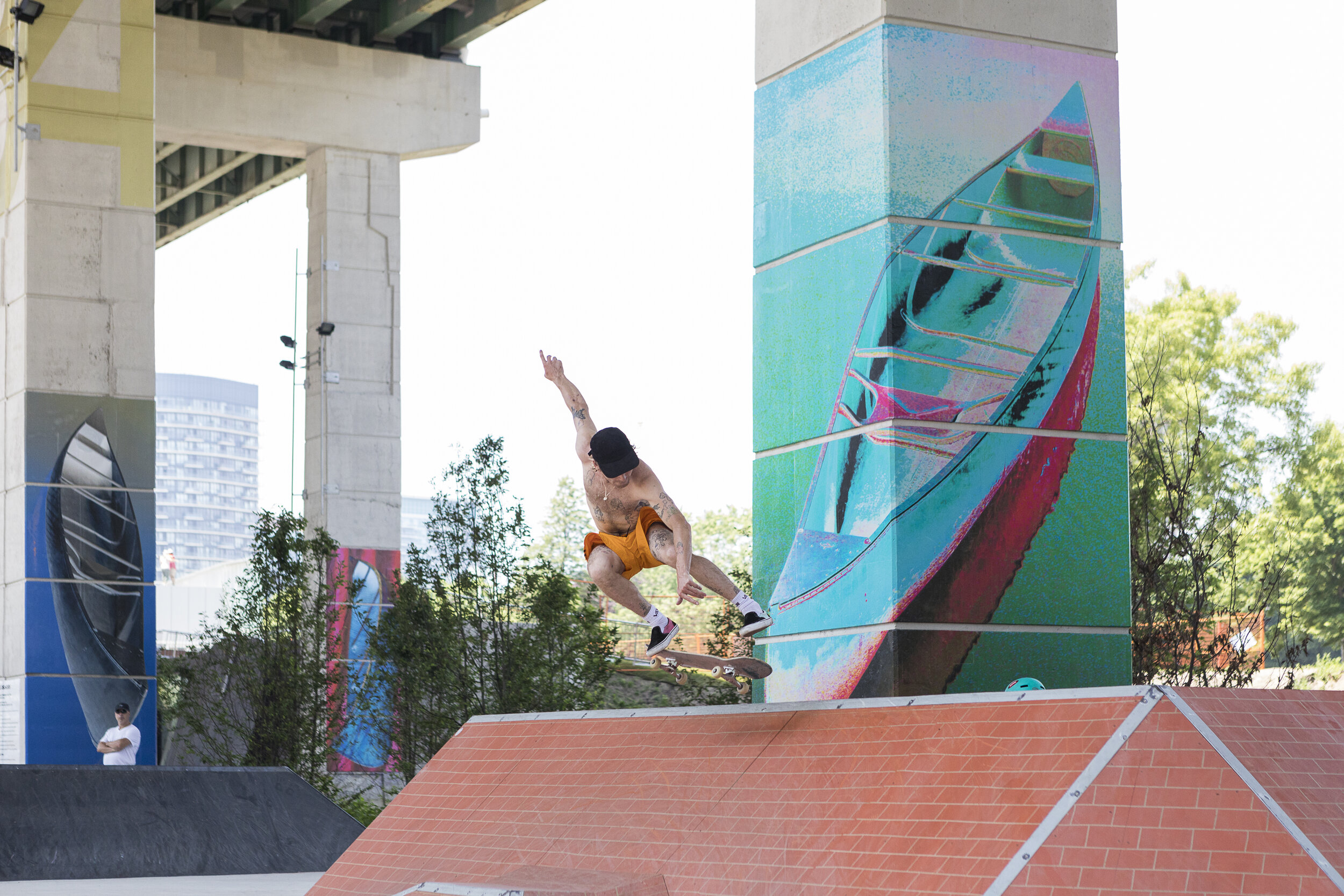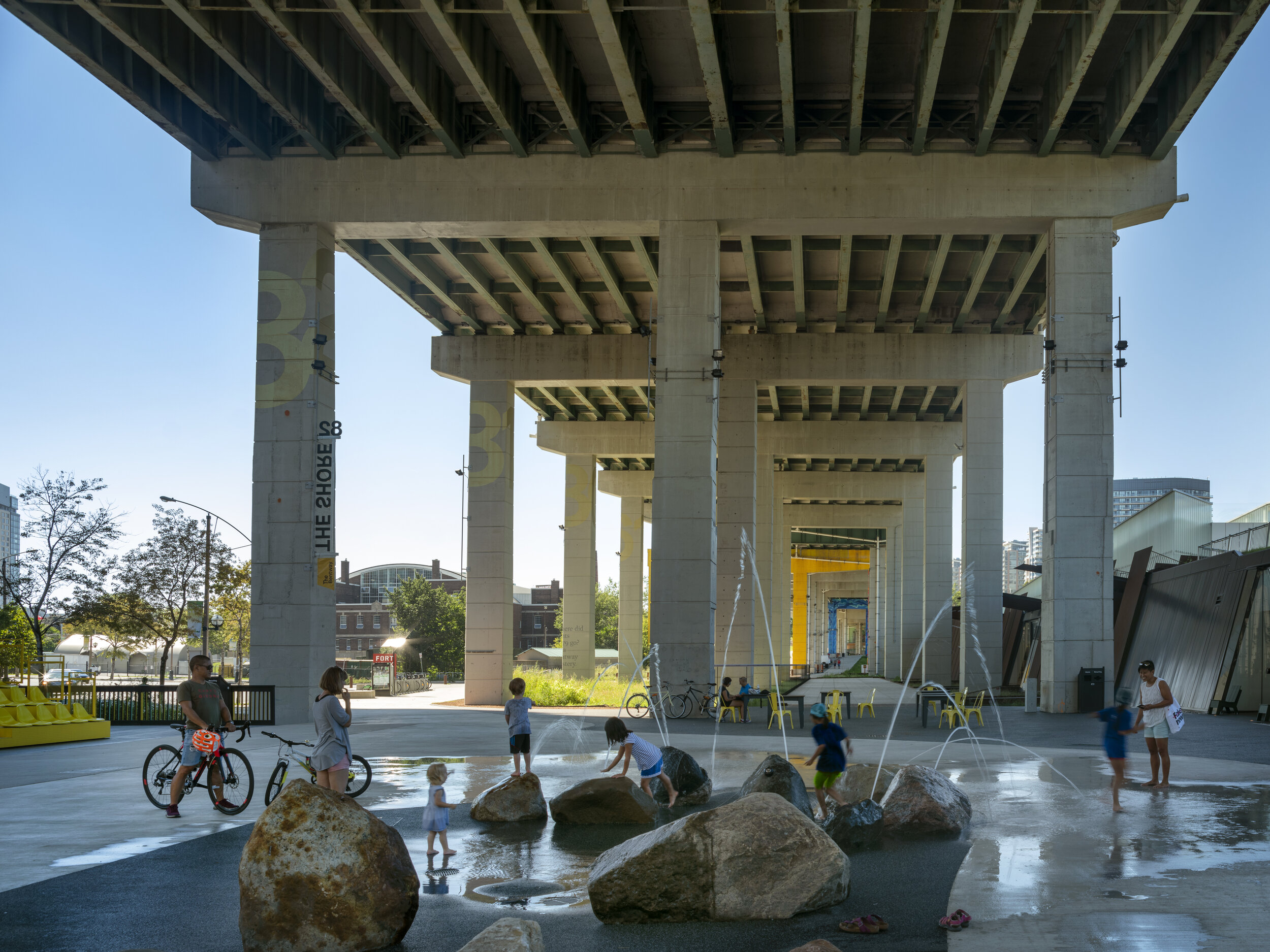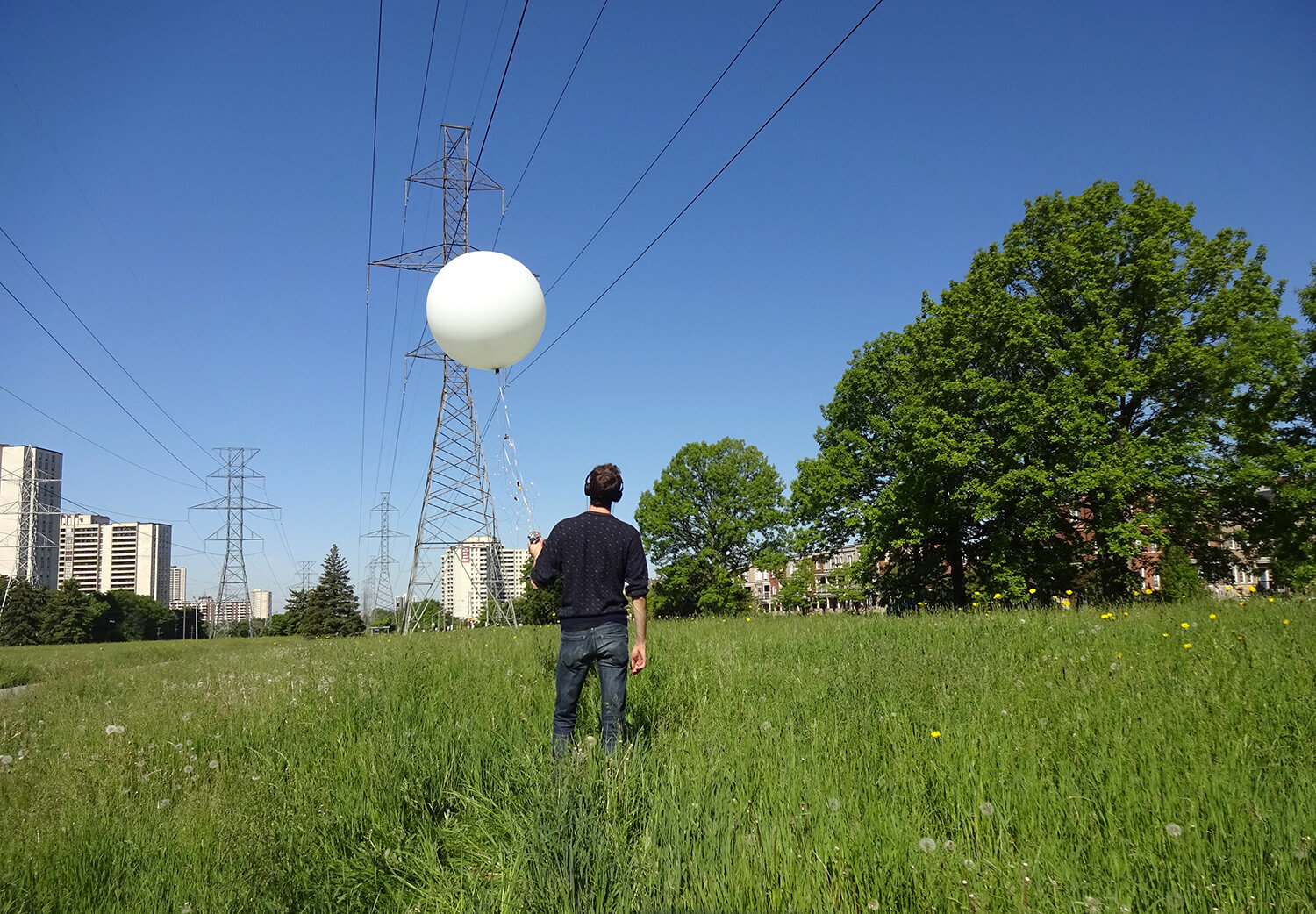Translating the City

Programming Infrastructure at the Bentway
An Interview with Ilana Altman, by Ruth Jones
Excerpted from 40.3 Translate
Toronto’s Gardiner Expressway is both massive and belittled, decried for cutting the city off from the lake while following what was, before the city, the shoreline of that lake. It was built between 1955 and 1966 on the promise of efficiency, modernity, and a speedy commute from leafy suburbs to glittering skyscrapers and back again, and became associated with a fractured city-scape, crumbling concrete, and gridlock. Running for 1.75 km under the Gardiner, The Bentway, which opened for public use in 2018, is part park, part public art, an exhibition and community venue. Run by a conservancy, it uses its programming to test out a new language for infrastructural space, putting the Gardiner through an act of translation that brings it into dialogue with the lives that surround it. The Site Magazine editor Ruth Jones talks to Ilana Altman, The Bentway’s former director of programming and current co-executive director, about the challenges and possibilities of reimagining how a monumental piece of mid-century infrastructure fits into the life of a city
Image 1 | Enjoying the spashpad, September 15, 2018. Photograph by Nic Lehoux
RUTH JONES (RJ) | To start, can you tell me a little bit about what your role is at The Bentway, and what that means for how programming fits into the overall idea what the space is and how it’s managed?
ILANA ALTMAN (IA) | Right from the beginning, programming was very central to the vision of The Bentway developed by Ken Greenberg and Judy and Wil Matthews. It was not an afterthought. Very often people are quite focused on the build project, and that is the priority. To their credit, the people who established the Conservancy recognized that if this was a space that was to remain relevant and responsive to the communities that it was intending to open itself up to, that programming wasn’t just a means of animating the space, but a means of continuing to tell the story of this place and to reflect the interests and needs of the community around it and throughout Toronto.
RJ | So that pairing of the build project and programming changes the relationship between them.
IA | I think that we, as well as our partners, tend to come to the site and find ourselves very inspired. Our partners recognize that they have the opportunity to do things at The Bentway that they wouldn’t have the opportunity to do elsewhere. We’ve steered away from a parachute model where programming exists in isolation and drops in and drops out of the space. The experience of The Bentway and the experience of the programming we offer are intended to be one and the same.
In addition to the larger-scale events and community activations, we are aiming to encourage more passive programming. Things like the art installations and amenities like the skating trail give people the opportunity to explore the space on their own, on their own terms, in complement to the more active programming, where we’re encouraging people to join us in a specific activity. We’re hoping that as more people learn about us and engage with the space we will continue to see the passive traffic across the site grow.
[...]
Image 2 | Dana Claxton’s A Forest of Canoes on the opening of Cite: a celebration of skateboard arts and culture, July 01, 2018. Photograph by Denise Militzer
RJ | Do you think that you have a lot more ability with something like The Bentway, where it’s set up from the get go that artists will be involved through ongoing programming, to create a feeling of responsiveness between the work, the community, and the site?
IA | I think so. First of all, there’s a dialogue between us and the artists, and they’re not working in isolation— we try to support them through the process from the beginning, and allow them to develop a concept rather than starting with a fully formed pitch. None of the pieces are presented as stand alones. They are part of larger exhibitions, so there are larger ideas being explored and a dialogue that is encouraged between the pieces presented in a single season. We also organize a series of public art tours with any one of our exhibitions, where we invite different members of the community from political and educational backgrounds, guides with entirely different perspectives, to come and reflect on the show and talk about their own practices. It’s always in the interest of having a broader conversation about the city.
[...]
Image 3 | Daan Roosegaarde’s Waterlicht installation at The Bentway, October 13, 2018. Photograph by Nicola Betts
RJ | There’s this way in which The Bentway and spaces like it are injecting flexibility into the city in flux by taking a broader view of what this space and allowing for an enjoyment of what is there.
IA | I’m probably one of those nerdy architects who always found it fascinating to stand under a highway. But I recognize that for most people, the notion of spending their day under the Gardiner is pretty unappealing. The Bentway has been this wonderful re-evaluation or recognition that these spaces that are very much part of our city can be wonderful experiences. I often come back to those debates that have been taking place in Toronto for generations about this piece of infrastructure that has divided us quite literally—from the waterfront, from each other—that has been seen as a scar across the city. And now we convene underneath it to talk about the things that connect us. That to me is pretty powerful—and pretty exciting. People still use it for their commute every single day. But now it’s not just highway.
I was always fascinated with the architectural section. The section was always the most revealing drawing to me—that incredible image of the Waldorf-Astoria hotel in Delirious New York—places where the city just kind of reveals itself, and you recognize that there are all these lives that are happening on top of each other. I see that layered city emerging in a very real way at The Bentway. And I think that’s really exciting. There’s a certain maturity that is associated with a city that celebrates its multiplicity and contradictions.
RJ | That’s an interesting word, why maturity?
IA | Recognizing that your strength comes from being many things, that the hybrid nature of the city is its greatest asset. And I think that younger cities take a longer time to recognize and appreciate that strength.
RJ | They almost have to be forced into it.
IA | Yeah.
The full version of this article appeared in -SITE 40.3: Translate.
Image 4 | Skating on The Bentway Skate Trail, February 1, 2018. Photograph by Denise Militzer
The full version of this article appeared in -SITE 40.3: Translate.
Bio
Ilana Altman is a cultural planner and designer who has a background in art and architecture. In her role as co-executive director of The Bentway she works with the community and a multitude of partners to implement innovative and engaging programming, revealing new possibilities for public space and cultivating a unique and welcoming visitor experience.









